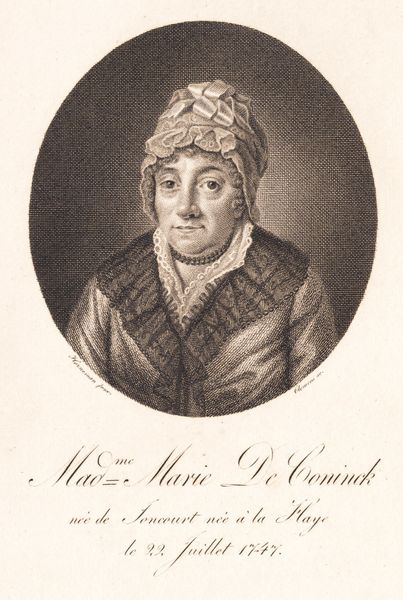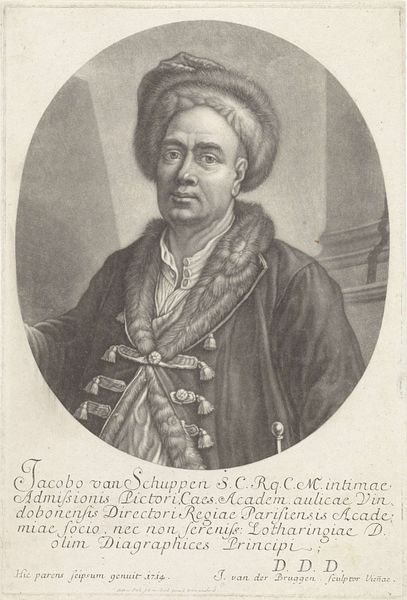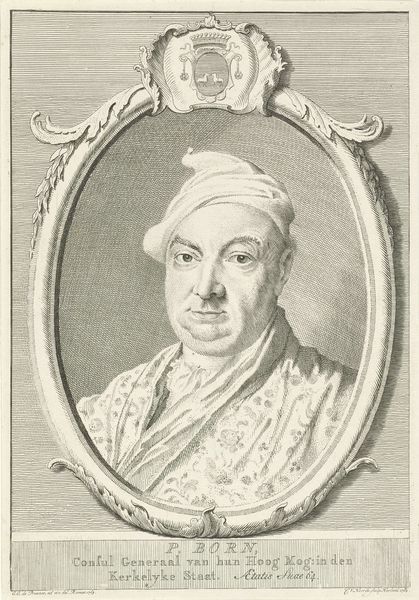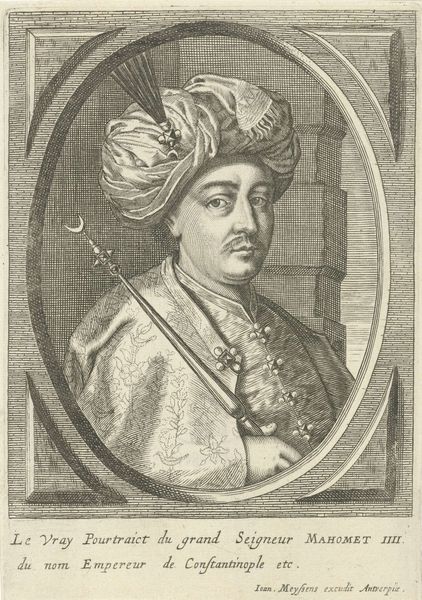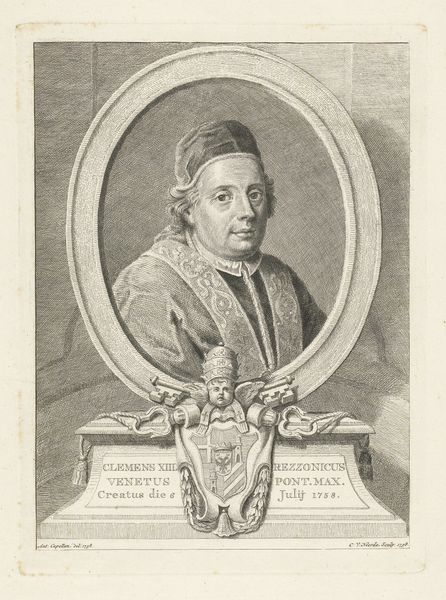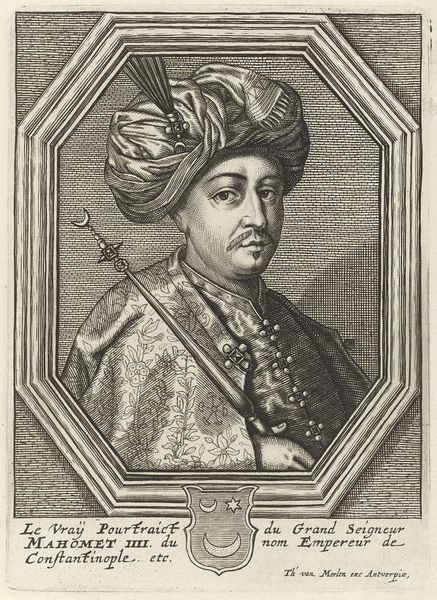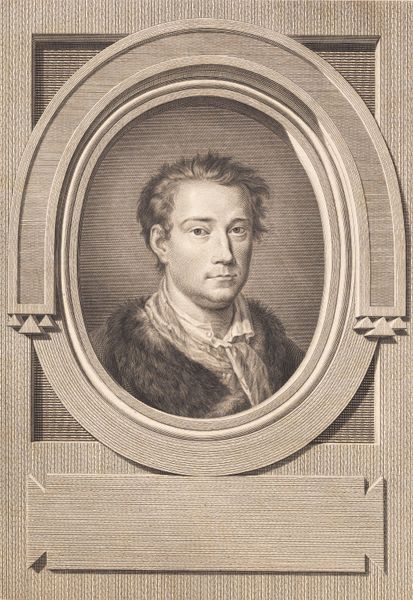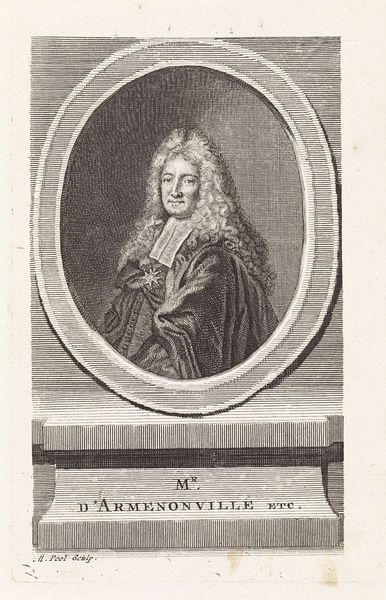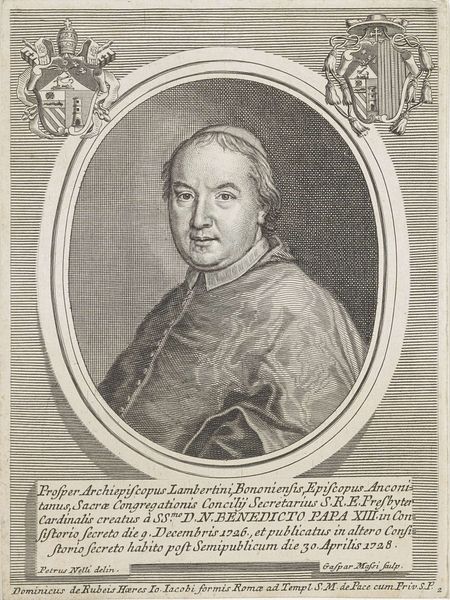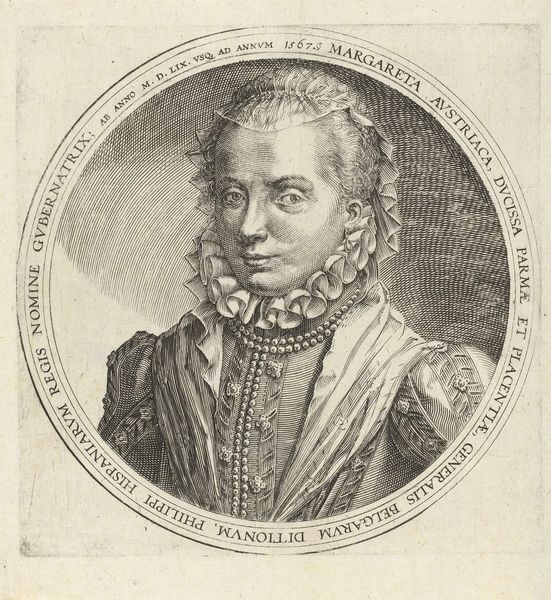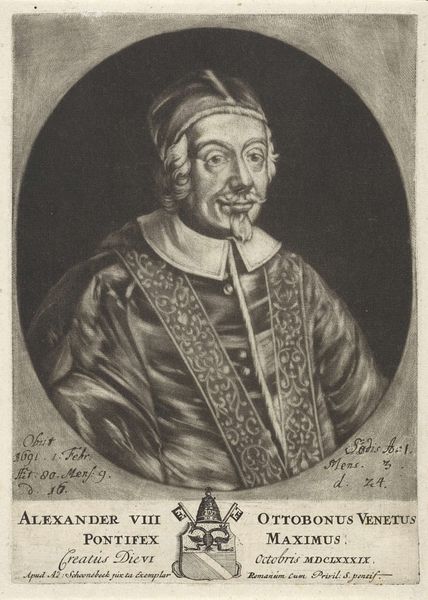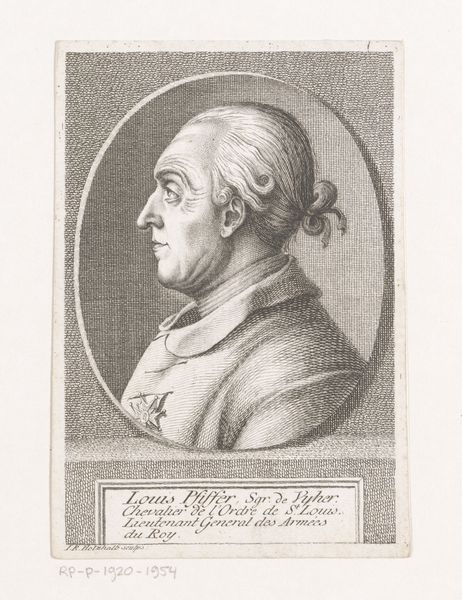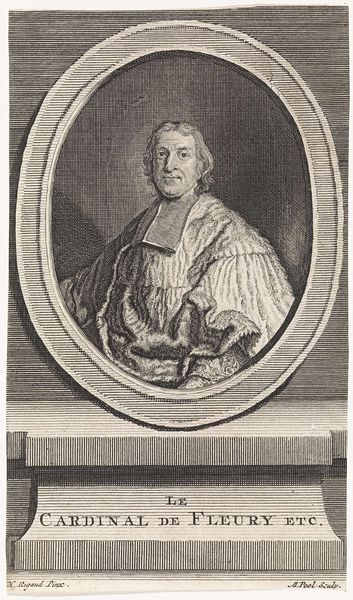
Dimensions: 232 mm (height) x 150 mm (width) (bladmaal), 198 mm (height) x 131 mm (width) (plademaal)
Editor: So, this is J.F. Clemens’s engraving of “Marie de Coninck,” likely created sometime between 1748 and 1831. It's a small, intimate portrait, and something about the direct gaze feels very modern despite being labeled Baroque. What strikes you when you look at it? Curator: The directness certainly stands out, doesn't it? It transcends mere likeness; it speaks to the societal position of women during that era. What objects, shapes or patterns do you notice, and what weight do they carry? Editor: Well, her bonnet is quite elaborate, almost like a crown. It gives her stature but also perhaps boxes her in? And her gaze, she meets the viewer directly, yet there's a vulnerability there, too. Curator: Precisely! The bonnet can be seen as both adornment and constraint, a visible symbol of her societal role. How do you interpret the dark background? Editor: It isolates her, focusing all the attention on her face and clothing, making the details more significant. It feels purposeful, almost as though the artist wanted to emphasize her individuality within those constraints. Curator: Excellent observation! The dark background is like the inky depths of the collective memory. What is recorded remains alive. And what emotions does this contrast evoke within you, considering our present day? Editor: Thinking about how women were viewed then, and even now, it makes me think about the limitations that society still places on people, the bonnets that we metaphorically still wear. It shows the ongoing negotiation between individual identity and cultural expectation. Curator: Exactly. And within those restrictions, it exposes the individual strength present through her eyes and directness. It gives this print a remarkable timelessness. Editor: I hadn’t thought about it that way. Seeing those cultural symbols as more than just decorative elements really changes how I view this piece, it now tells a longer story, stretching into today. Curator: It certainly does! Symbols are not relics but reverberations, are they not?
Comments
No comments
Be the first to comment and join the conversation on the ultimate creative platform.
